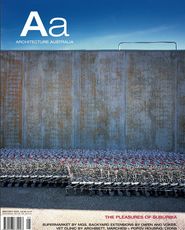THE RAIA SISALATION PRIZE CELEBRATES FIVE DECADES THIS YEAR. ROWAN BROWN OUTLINES CHANGING PROFESSIONAL CONCERNS AS REFLECTED BY THE PRIZE.
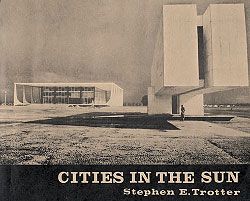
Cover of Steve Trotter’s Cities in the Sun (1963).
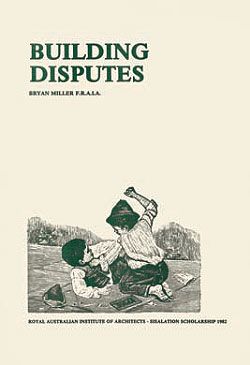
Bryan Miller’s “Building Disputes” of 1982.
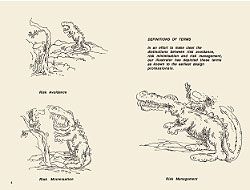
Cartoons from Charles Nelson’s 1990 “Risk Management for Design Professionals”, which provided a step-by-step guide, showing architects how to manage risk over the course of a project. The hand drawn cartoons illustrate the concepts, adding to the direct, crisp and unambiguous structure of the text.
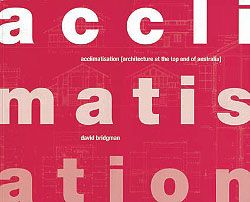
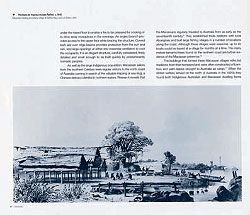
Acclimatisation: Architecture at the Top End of Australia, by David Bridgman (2003).
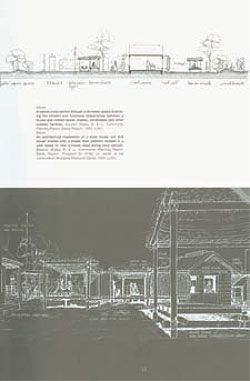
A page from Take 2, Paul Memmott’s Housing Design in Indigenous Australia (2002).
THE RAIA SISALATION Prize, celebrating its fiftieth year in 2005, has been a barometer for the interests and aspirations of a profession. In its early years, it echoed a profession far flung from its nearest contemporaries, then in need of a way of taking its brightest to the world to collect and repatriate progress. This was achieved through generously supporting international investigation by young architects. Today the prize still acts as gauge of professional inclination, but now reflects a coming of age in Australian architecture, with its diverse array of positions and approaches. The collaborative sponsorship between the RAIA and Insulation Solutions (formerly ACI) still seeks to further research and knowledge of architecture relevant to the Australian profession, but the prize’s focus has shifted towards a confident appraisal and critique of the culture and history of Australian design.
At its inception the prize aimed to give young architects the chance “to travel and to study the practice of architecture and the building industry and to obtain training and experience in the duties of an executive architect for the better management and organisation of building projects.” Most of the early Sisalation projects – those between 1956 and 1969 – followed the format of a professional or business report, rather than a scholarly investigation or designerly examination of precedent. They focused on reporting practice management trends and contractual developments and, to a lesser extent, technical and industrial progress. This typified the era’s state of practice, as the profession tried to change the perception of itself from a loose collection of artistically-minded learned gentlemen to an organized, efficient and most of all business-like essential of the booming postwar economy. This professional climate was evinced by Neil Everist’s 1964 Sisalation report “Management in the Building Industry” and Ross Chisholm’s “A Report on Contractual Procedure” (1965).
The prize attracted some of the most influential practitioners of the era, including Neil Everist (1964), Ken Woolley (1967) and James Birrell (1961). So focused was the profession on this broader desire for commercial credibility that practice and management issues dominated Sisalation investigations rather than the theories or ideologies that would lead to profound design work. For example,Woolley, by then notable for his own home in Sydney of 1962, examined the issue of “Provision of Buildings by Arrangements other than the Traditional One” (1967). A survey and analysis of alternative contract arrangements in Europe, the USA and the UK, it may have influenced the delivery of the so-called Sydney School works with which Woolley is so often associated, but it seems to have little connection with their actual architecture.
Brisbane practitioner Stephen Trotter’s Cities in the Sun(1963) diverged from the technical report format, and was considered so important that it was published as a book. It helped to underpin the broader acclimatization project so evident in Queensland in the 1960s. Trotter’s work, with its bold cover photograph of the monumentality of Brasilia, was an edited travel diary of an extensive trip through the subcontinent, Persia, Oceania, South America, North America and Europe. Full of sketches, photographs and descriptions of architectures vernacular, colonial and modern, his work illustrated the architectural approaches of what he describes as “Hot and Dry” or “Hot and Wet” climates. It was a rare instance of the power of the illustrated travelogue and was of sure interest to those craving design strategies to cope with tropical climates. His preparedness to examine vernacular models as well as Modern and colonial work was unusual for the time, and perhaps at odds with his insistence that Australia had no indigenous precedents.
One of the most intriguing reports of the 1960s was James Learmonth’s “The Use of the Computer in Planning for Tertiary Educational Institutions” (1969). One of the best framed and most erudite of the business-report format projects, this pitted the computational power of the then emergent computer technologies against the planning and programming requirements of the university master plan. Learmonth’s rationale was that the university was akin to the city in microcosm and provided an excellent testing ground for techniques that may later help to rationally plan the metropolis. In quoting Winston Churchill, “we shape our spaces and they shape us”, Learmonth flagged the fundamental issue that the quality of the output is only as good as the input, thus casting the same shadow of humanist scepticism that would, during the 1960s and 70s, lead to a shift away from the rationalities of Modernism. The overall trajectory of the prize changed little in the 1970s and 1980s, with a continued focus on practice management, though by then including alternative forms of contract and marketing strategies. A number of reports, though very much the minority, foreshadowed the overall change in the direction of Australian practice which would come in later years. On occasion, reports increased in length and depth, and included broader ideological positions. This reflected a new dimension in the prize. It ceased to be solely a vehicle for young architects to contribute to the development of Australian practice relative to world standards; instead, it became a way for architects to explore a topic that would either form the basis for a later specialization or further an area of study with which they were already familiar.
Bryan Miller’s “Building Disputes” of 1982 was a rigorous analysis of the seemingly endless potential for disagreement within the construction industry. Replete with an engraving of two children brawling on the front cover, it not only went on to influence Miller’s move towards specialization within the industry but also became an important text in the field.
This new depth was complemented by a more diverse array of subjects for which the prize was awarded. Two new topics, concern for the environment and built heritage, emerged with “Natural Energy in Buildings” by Graham Law (1977) and with Richard Allom’s “Conservation of the Historic Built Environment: Community Needs and Architectural Responsibility” (1983). These alluded to issues that today are some of the prime concerns of Australian architectural discourse, and also proved to be prime fodder for more extensive debate in later Sisalation reports.
Allom’s report critiqued the Australian profession’s performance and understanding of conservation and heritage against that in Great Britain, Europe and North America. He used the travelling scholarship as an incredibly effective, and, more importantly, constructive, tool to shed light on the state and future role of conservation within Australian practice. Not just identifying deficiencies, Allom suggested ways forward that were supported by international models with proven track records, citing, for example, the success of the American Institute of Architects’ Cautionary Notes informing ordinary architects of conservation issues. Unique to Allom’s report is an extensive interview with the then RAIA President David Nutter, in which the pair address a range of topics around the differing approaches to and perception of heritage around the globe. This direct action in which a scholarship recipient not only reported but discussed the findings of the prize with the head of the Institute was unprecedented.
The 1990s marked a period of crisis in the history of the prize. The study tour format, formalized by a final report, had been abandoned in 1989 in favour of supporting research towards the production of a book. Although undoubtedly an unfortunate coincidence, the 1989 prize winner, David Brown, lost all his interview notes in a baggage-handling mishap, severely limiting his ability to produce the intended report of his investigations. Subsequent awards, often commissioned on a topic broadly decided by the prizes’ Steering Committee, indicated a growing self-confidence, as the international component was largely dropped in favour of investigating Australian architecture and themes. But the effect of the format change, made with the best of intentions, was disastrous: by 2001, only two manuscripts of the nine prizes awarded in the 1990s had been submitted and published. This has since been somewhat rectified, with five of the reports now having come to fruition, however it is clear that the time and expense involved in researching, writing and publishing a book, even with a Sisalation Scholarship, was difficult within the commitments of a practitioner or even an academic.
Nonetheless, the reports of the 1990s made one thing very clear: Australian architecture had come of age. No longer was the Australian profession looking towards business precedents from North America or intellectual and cultural developments from Europe to lead the way. Instead it wanted to reappraise local thought, history and design to form the basis for our future. One effect of this shift was a movement in the prizes’ themes towards narrower, more focused, topics of investigation that lent themselves towards the professional academic, such as Andrew Metcalf’s Thinking Architecture (awarded 1992, published 1995) or Julie Willis and Bronwyn Hanna’s Women Architects in Australia 1900–1950 (awarded to Willis in 1995, published in 2001), shifting the authorship of the once very much practice-oriented prize.
David Bridgman’s Acclimatisation: Architecture at the top end of Australia (awarded 1999, published 2003) aimed to redress the lack of historical and typological understanding of the architecture of the Northern Territory. When compared to Stephen Trotter’s earlier work, this recurrence of the acclimatization question makes the fundamental shift in the format and geographic scope of the prize very clear. Arguing a strong typological difference between the architectures of the Northern Territory and Queensland, Bridgman constructs a chronology, drawing from examples of precolonial settlement from the north to current practitioners, like Troppo and Glenn Murcutt. To combat the falling completion rate and to broaden the input, the current format was devised in 2000. The TAKE series, an annual journal edited by the prize winner, aimed to bring together a range of co-contributors from academia and practice, but also other related disciplines and government, in a discursive format. The effect has been to straddle the fence between practice, academia and authority, respecting that practitioners are not foremost authors or publishers, but have a critical place in the furthering of Australian architectural research, professional knowledge and scholarly debate.
Paul Memmott’s Housing Design in Indigenous Australia (2002) exemplifies the TAKE series, bringing together authors with a range of backgrounds – architectural practice, academic architecture and anthropology, planning and construction – to survey the landscape of Indigenous housing design. This scholarly investigation of the culturally diverse pragmatic architectures of Indigenous Australia, with a sensitivity to anthropology and sociology, fills crucial gaps in the profession’s understanding, while making clear the strengths of the interdisciplinary nature of the new format. Memmot draws together case studies from across the country, both urban and rural, and provides not just an examination of the history and issues related to Indigenous housing, but also a series of specific, if not universal, solutions.
The Sisalation Prize, across its different incarnations, has served to repatriate and disseminate information within the Australian context. By fostering architectural research, it has become a living record of the intentions and aspirations of Australian practice. To read the prize’s significance in simple historic terms is to miss the fundamentally important role it has played, and will play, as a catalyst for change within our profession: in its current discursive editorial format, it will continue to reflect the profession’s concerns as a vital forum for architectural research and scholarly debate in Australian architecture.
ROWAN BROWN IS A MASTERS CANDIDATE AT THE UNIVERSITY OF MELBOURNE.

